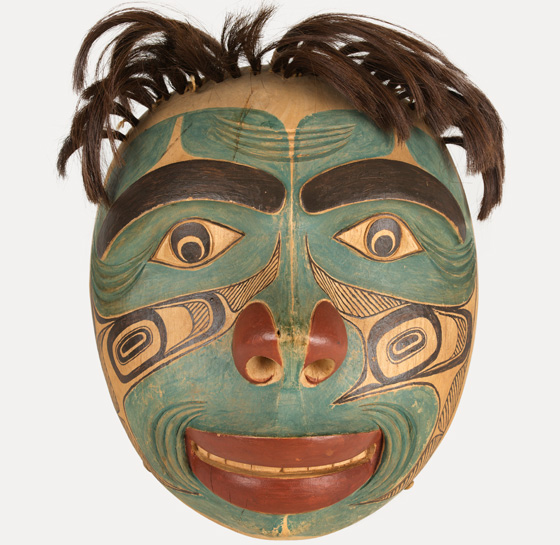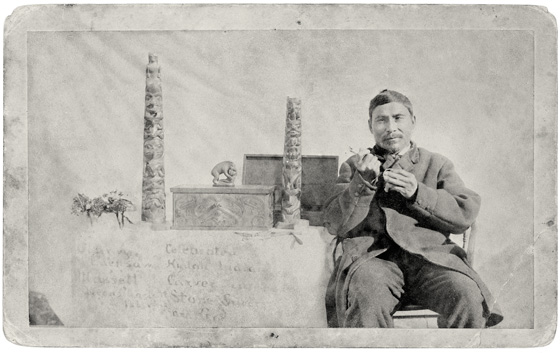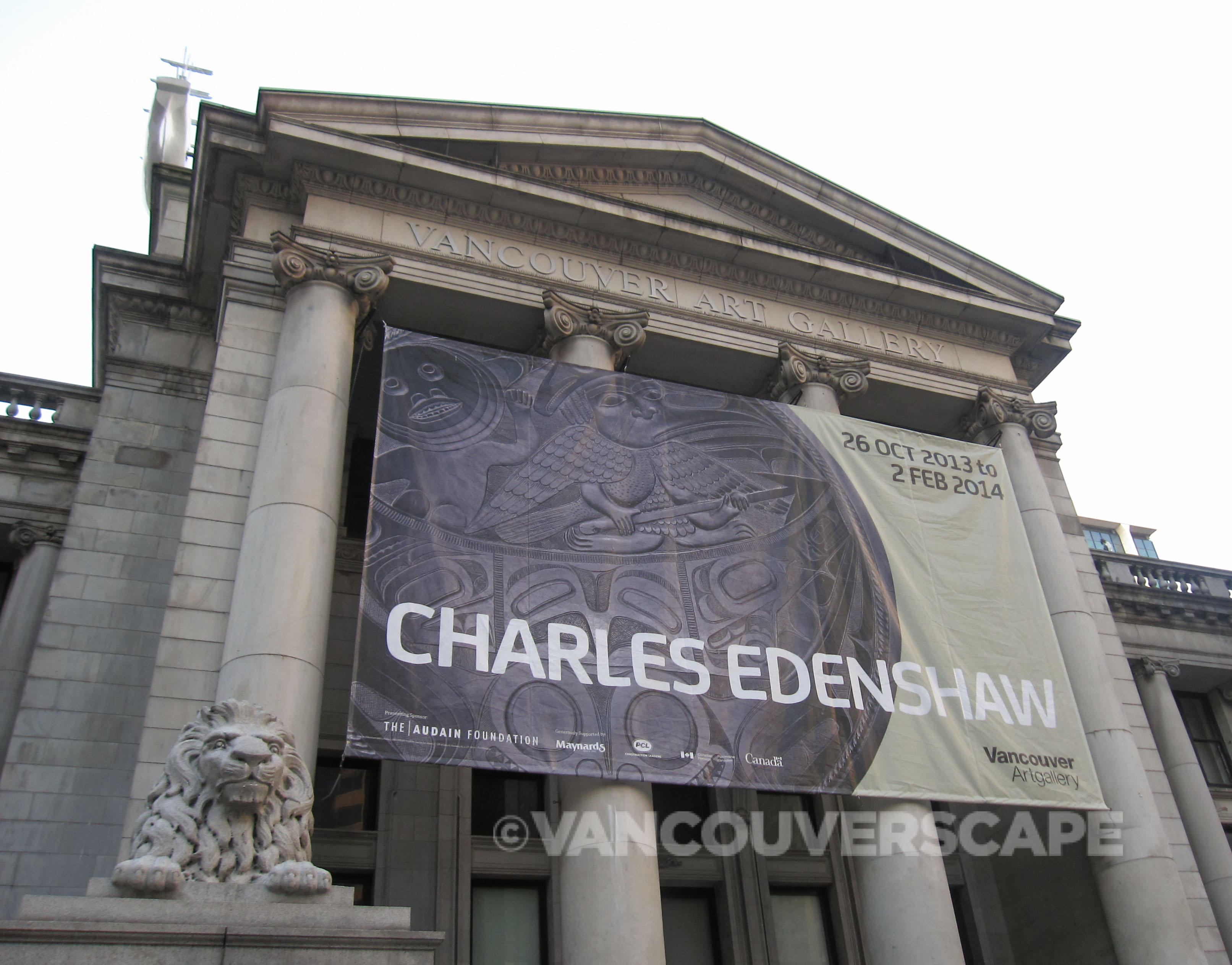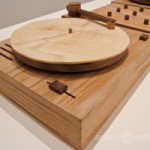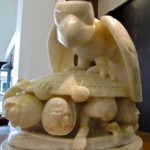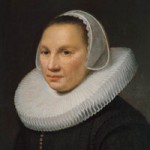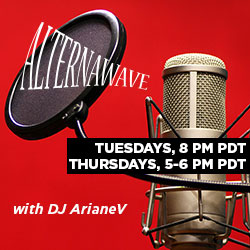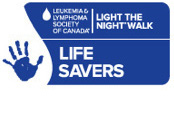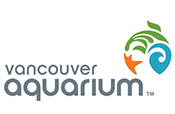Charles Edenshaw was recognized in his time as an outstanding Haida artist and remains an iconic figure in Northwest Coast art. Working in the late nineteenth and early twentieth centuries (1829-1920), he was an exceptional carver of wood, silver and argillite, combining traditional Haida design with an innovative and elegant personal style, and raising Northwest Coast art to new heights of sophistication. Opening this Saturday, October 26, Vancouver Art Gallery’s Charles Edenshaw exhibit will mark the first major survey of Edenshaw’s work, and will include 240 pieces in all media from public and private collections around the world.
I was invited to a media preview yesterday, together with Robin K. Wright and Daina Augaitis, co-curators of the exhibit. After a brief introduction, we were guided through the gallery spaces by Daina (VAG’s Chief Curator) and Robin (University of Washington, Seattle’s Bill Holm Center for the Study of Northwest Coast Art Director), enjoying a sneak peek at one of the greatest luminaries of Haida art, relevant and influential to this day.
Da.a xiigang (as Edenshaw was known in his native Haida language), was featured for the first time at the VAG in 1941, where a B.C. Coast Indian Art exhibit featured First Nations artwork. Later in 1967, Edenshaw had his first retrospective as part of the Centenntial Project, entitled Arts of the Raven. Most recently, First Nations Art was displayed during VAG’s Beat Nation: Art, Hip Hop and Aboriginal Culture, another exhibit that I had the honour to preview.
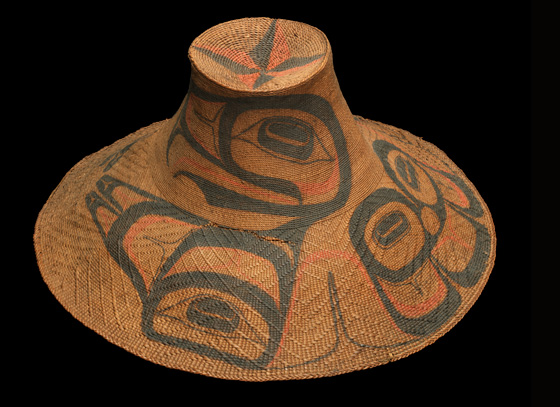
[Eagle Hat, c. 1890, spruce root, paint;
Museum of Anthropology, The University of British Columbia, Vancouver;
photo: Trevor Mills, Vancouver Art Gallery]
The way in which Edenshaw incorporated subjects from traditional Haida stories into his work is one of his crowning qualities. His development of overlapping and interwoven forms was unprecedented and brought new vitality to these subjects. Wife Isabella’s spruce root hat weaving is included in the exhibition. She wove the hats that Charles would later decorate with Haida motifs using pigments available at the time (red vermillion from China, iron ochre, magnetite, soladinite, and commercial paints).
Included in the exhibit are various Coastal Nations artists who were later influenced by Edenshaw, including Bill Reid. Several of Reid’s metal and bone engraving tools are on loan from the Museum of Anthropology at UBC as well as a collection of silver bracelets containing well-known iconic images.
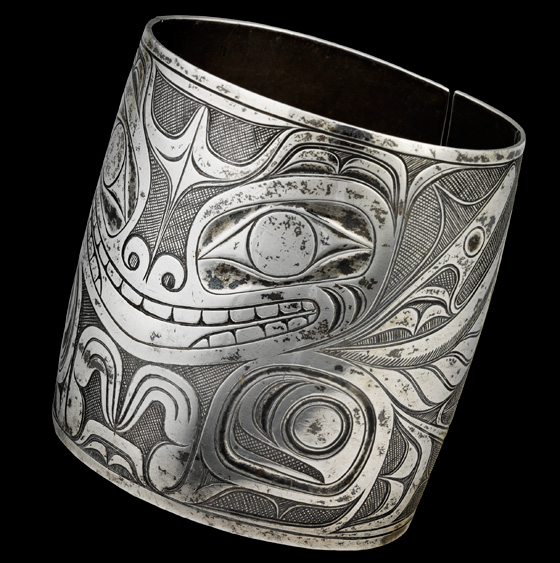
[Sea Bear Bracelet, late 19th century silver;
McMichael Canadian Art Collection;
photo: Trevor Mills, Vancouver Art Gallery]
“We are very proud and honoured to present the first career survey of Charles Edenshaw, one of the greatest luminaries of Haida art,” announced Gallery director Kathleen S. Bartels. “This exhibition offers a once-in-a-lifetime opportunity to view the largest number of works by the artist ever assembled.”
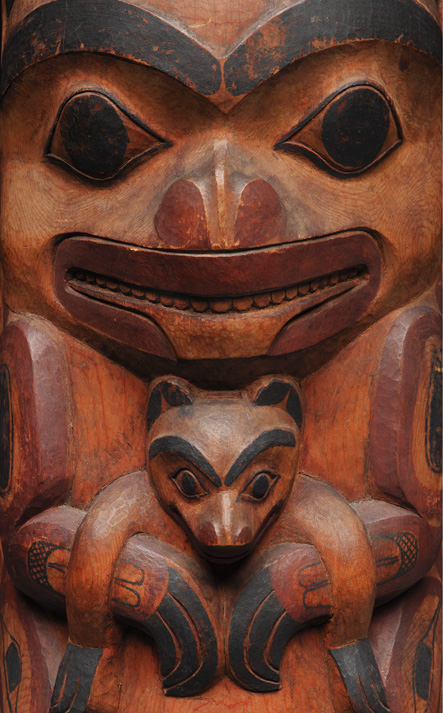
[Model Pole, c. 1885 (detail), wood;
Museum of Vancouver Collection;
photo: Trevor Mills, Vancouver Art Gallery]
The exhibit is both stunning and educational, from his carved argillite platters and chests to works by his contemporaries, further highlighting the fact that many wanted to emulate the artist’s style. He left an enormous legacy to both Coastal Nations artisans and to the world.
Edenshaw’s generation faced mounting government pressure to abandon their traditional way of life and assimilate to a colonial lifestyle. The result was an interruption of the “Haida Way”, and the landscape for all cultural activity was sadly reconfigured following this period in history.
Vancouver is lucky to have access to the largest collection of Edenshaw’s works ever assembled under one roof. The exhibit will continue through February 2, 2014, then travel to Ottawa’s National Gallery. Visit the Vancouver Art Gallery website for opening hours, admission, and special events surrounding the exhibition.
